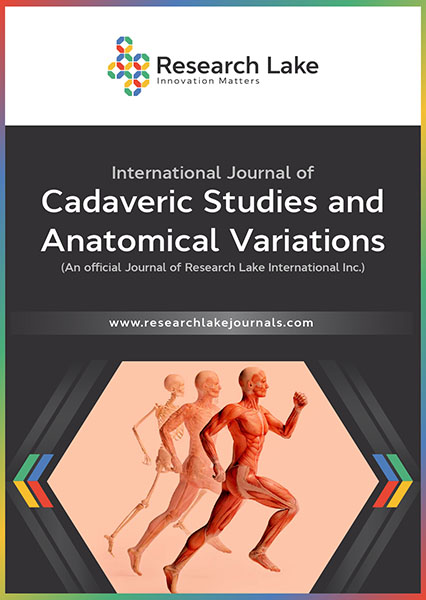MACROMICROSCOPIC CHARACTERISTICS OF INDIVIDUAL AND AGED VARIABILITY OF THE GLANDS OF THE VAGINAL VESTIBULE
Abstract
The aim of the study was to obtain data on the aged and individual characteristics of the glands of the vaginal vestibule in women under conditions of a relative norm.
Material and research methods. By the macromicroscopic way, the small glands of the vaginal vestibule wall were investigated in 163 women of different ages who died or died from accidental causes, without pathology of the urogenital system. The area of the vestibule was dissected from the corpse by the preparation method. Next, the glands on the total preparation were stained in a 0.5% solution of acetic acid with a 0.05% solution of methylene blue in tap water [7] and fixed in a saturated solution of picric acid (molybdenum acid) ammonium. Using a MBS-9 binocular stereomicroscope (magnification. 8-64x), the total number of small glands, the length and width of their initial parts, the diameter of their common excretory duct (using an ocular ruler), and the percentage of glands with different numbers of initial parts were determined.
The results of the study. We found that in newborns the glandular apparatus of the vaginal vestibule is structurally formed. The maximum number and size of small glands of the vaginal vestibule are determined in the 1st period of adulthood. At the macromicroscopic level, involution of the glands is manifested by a decrease in their total number and size. The expansion of the excretory ducts of the glands occurs sequentially throughout postnatal ontogenesis. In long-livers in comparison with senile age, there is almost no further decrease in the number and size of glands of the vaginal vestibule.
Copyright (c) 2021 Shadlinskaya SV

This work is licensed under a Creative Commons Attribution-NonCommercial 4.0 International License.
Copyright © by the authors; licensee Research Lake International Inc., Canada. This article is an open access article distributed under the terms and conditions of the Creative Commons Attribution Non-Commercial License (CC BY-NC) (http://creativecommons.org/licenses/by-nc/4.0/).















